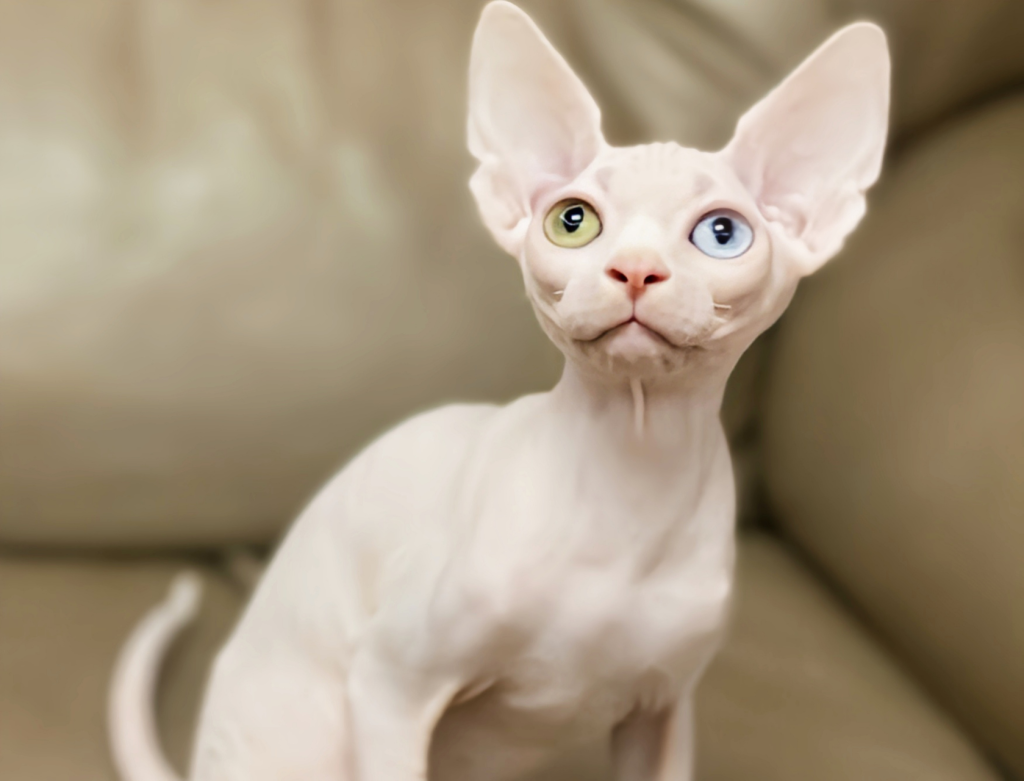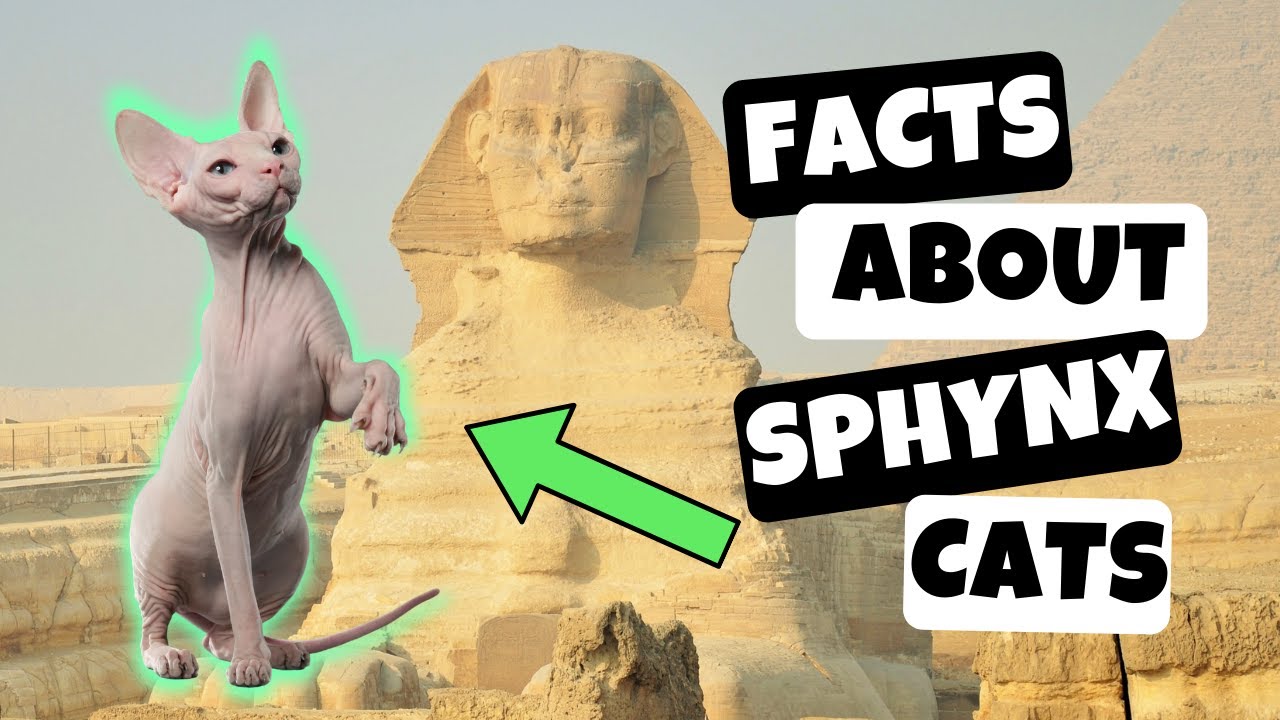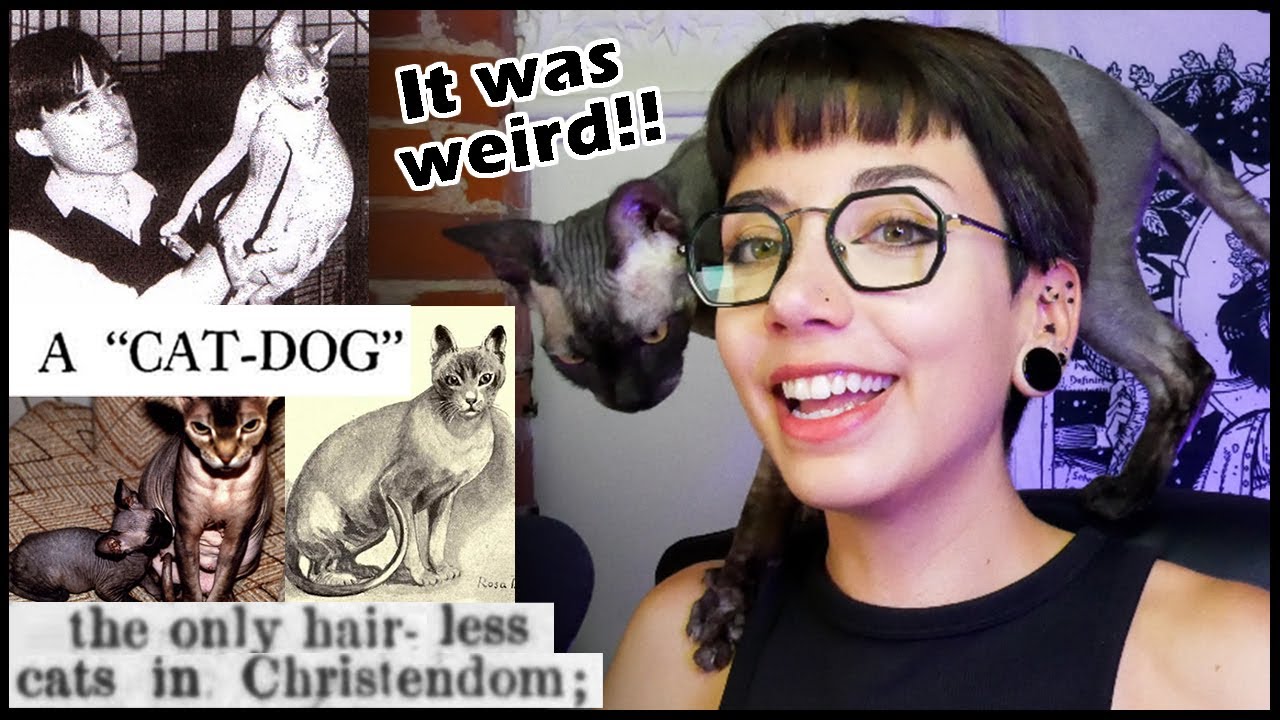
Imagine a cat that looks like it just stepped out of a sci-fi movie, feels like warm velvet, and acts more like a loyal puppy than a typical aloof feline. Meet the Sphynx—a breed shrouded in myths, adored for its quirks, and misunderstood by many. This 3,000+ word deep dive will answer every burning question you have about these hairless wonders, from their ancient-sounding name to their surprisingly high-maintenance lifestyle. Buckle up—this isn’t your average cat article.
1. Sphynx: Breaking Down the Basics
What’s in a Name?
- Official Name: Sphynx (pronounced “sphinx”)
- Aliases: Canadian Hairless, Naked Cat, Alien Cat
- Fun Fact: Despite the Egyptian-inspired name, the breed originated in Canada! The term “Sphynx” was chosen to reflect their regal, mysterious aura.
Physical Profile: Stats That Surprise
- Size: Medium-sized but muscular, resembling a “miniature panther.”
- Weight: 8–12 pounds (males average 10–12 lbs; females 8–10 lbs)—20% heavier than they look due to dense muscle.
- Height: 8–10 inches at the shoulder.
- Lifespan: 12–15 years (longer than Persian cats but shorter than Siamese).
- Tail: Thin, flexible, and often compared to a rat’s tail. Some have a slight curl at the tip.
- Skin Texture: Covered in a fine downy fuzz (like a peach) that can produce patterns like tabby, tortoiseshell, or solid colors.
Facial Features: The “Alien” Aesthetic
- Eyes: Large, lemon-shaped, and wide-set. Colors range from piercing blue to gold and odd-eyed (two different colors).
- Ears: Massive, bat-like ears up to 3 inches tall—a hallmark of the breed.
- Wrinkles: Pronounced forehead and shoulder wrinkles, giving them a “wise old man” appearance.
2. The Sphynx’s Origins: A Genetic Accident That Sparked a Revolution
From Prune to Stardom: The Birth of a Breed
The Sphynx’s story began in 1966 in Toronto, Canada, when a domestic shorthair cat gave birth to a hairless male kitten named Prune. Initially dismissed as a oddity, breeders later realized this was caused by a recessive genetic mutation.
Key Milestones:
- 1970s: Breeders crossed Prune’s descendants with Devon Rex cats to diversify the gene pool and reduce health issues.
- 1983: The Cat Fanciers’ Association (CFA) granted the Sphynx “provisional” breed status.
- 2002: Full championship status awarded by CFA, cementing its place in cat fancy history.
Myth Buster: Contrary to popular belief, Sphynx cats are NOT related to ancient Egyptian hairless cats. Their “exotic” name is purely marketing genius!
3. Personality Unleashed: Why Sphynx Cats Are Called “Velcro Pets”
The Dog-Like Feline
Forget everything you know about cats! Sphynx cats are:
- Extroverted: They greet guests, demand attention, and hate being alone.
- Playful: They’ll fetch toys, climb curtains, and invent games to entertain themselves.
- Affectionate: Known to snuggle under blankets, lick faces, and sleep pressed against their owner’s neck.
Quotes from the Experts:
- “Sphynx cats are the ultimate paradox—hairless yet warm, cat-like yet profoundly human-oriented.” — Dr. Jane Brunt, Feline Veterinarian.
- “They’re not pets; they’re comedians in a cat suit.” — Jackson Galaxy, Cat Behaviorist.
Ideal Owners: Who Should (and Shouldn’t) Adopt a Sphynx?
- Perfect For:
- Families with kids (they tolerate handling).
- People working from home (they crave constant interaction).
- Allergy sufferers (though not fully hypoallergenic—more on that later).
- Avoid If:
- You’re rarely home (separation anxiety is real).
- You dislike grooming (they need weekly baths).
4. Health & Lifespan: The Hidden Challenges of Hairlessness
Common Health Issues
- Hypertrophic Cardiomyopathy (HCM): A heart condition affecting 15–20% of Sphynx cats. Annual echocardiograms are recommended.
- Skin Conditions:
- Sunburn: Their pale skin burns easily. SPF pet-safe sunscreen is a must for outdoor access.
- Acne: Blackheads on the chin and tail due to oil buildup.
- Respiratory Issues: Prone to upper respiratory infections due to lack of nasal hair.
Extending Their Lifespan: Pro Tips
- Diet: High-protein, grain-free food to support their fast metabolism.
- Temperature Control: Keep homes between 72–80°F—they get cold easily!
- Vet Visits: Biannual checkups for early detection of HCM or skin cancer.
5. Grooming Guide: Yes, Hairless Cats Need MORE Maintenance!
Step-by-Step Bathing Routine
- Weekly Baths: Use lukewarm water and hypoallergenic shampoo.
- Ear Cleaning: Wipe ears with a vet-approved solution to prevent wax buildup.
- Nail Trimming: Every 2 weeks (their nails grow faster than average cats’).
- Skin Moisturizing: Apply coconut oil or pet-safe lotion to prevent dryness.
Warning: Skip baths, and your Sphynx will develop a “sticky” film and smell like old cheese!
Clothing: Fashion or Necessity?
Sphynx cats need sweaters in cold weather, but avoid tight fabrics. Opt for breathable cotton or bamboo blends.
6. Debunking Myths: The Truth About Sphynx Cats
Myth 1: They’re Hypoallergenic
Reality: They produce less Fel d 1 allergen than furry cats, but their saliva and skin oils can still trigger reactions.
Myth 2: They’re Low-Maintenance
Reality: Their care routine is more demanding than Persian cats!
Myth 3: They’re Aggressive
Reality: Sphynx cats score low on aggression scales but high on curiosity and playfulness.
7. FAQs: Your Top Sphynx Questions Answered
Q1: Do Sphynx cats get along with dogs?
A: Yes! Their social nature makes them great companions for dog-friendly breeds like Golden Retrievers.
Q2: How much do Sphynx cats cost?
A: $1,800–$3,500 for a pedigreed kitten. Adoption fees range from $300–$600.
Q3: Can Sphynx cats go outside?
A: Only under supervision—they lack fur for protection and temperature regulation.
Q4: Do Sphynx cats sweat?
A: They secrete oils through their skin, giving a “sweaty” feel. Regular baths are essential.
Q5: Are Sphynx cats intelligent?
A: Exceptionally! They can learn tricks, open doors, and even recognize their names.
8. The Cultural Phenomenon: Sphynx Cats in Pop Culture
- Mr. Bigglesworth: The hairless cat in Austin Powers films boosted the breed’s popularity.
- Instagram Stars: @lilongthesphynx (2.3M followers) showcases their quirky antics.
- Celebrity Owners: Ed Sheeran, Jennifer Aniston, and Diddy have all owned Sphynx cats.
9. Adoption Checklist: Are You Ready for a Sphynx?
- Budget for high-quality food, vet bills, and grooming supplies.
- Kitten-proof your home (they’re notorious for stealing small objects).
- Invest in heated beds and humidifiers for optimal comfort.
10. Final Verdict: Is the Sphynx Right for You?
If you want a cat that acts like a cross between a monkey, a dog, and a comedian, the Sphynx will steal your heart. But beware: their demanding care and clingy nature aren’t for the faint of heart. As breeder Sarah Richards warns, “Once you go Sphynx, you never go back!”

